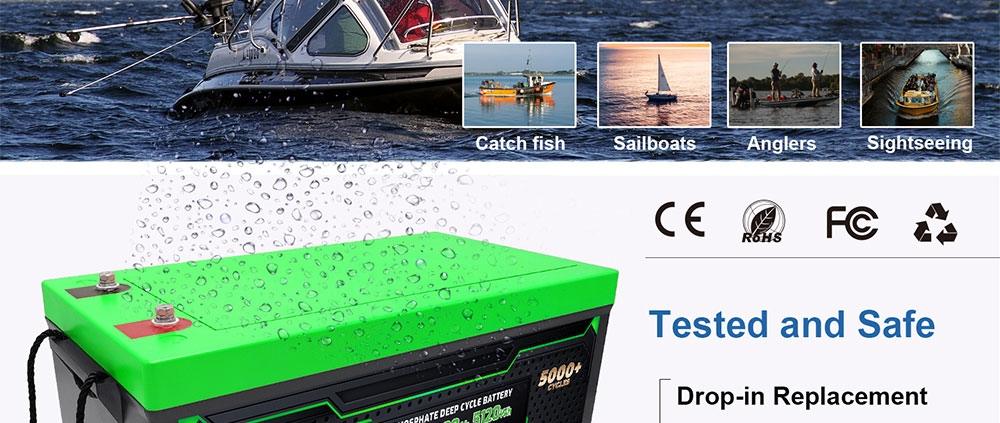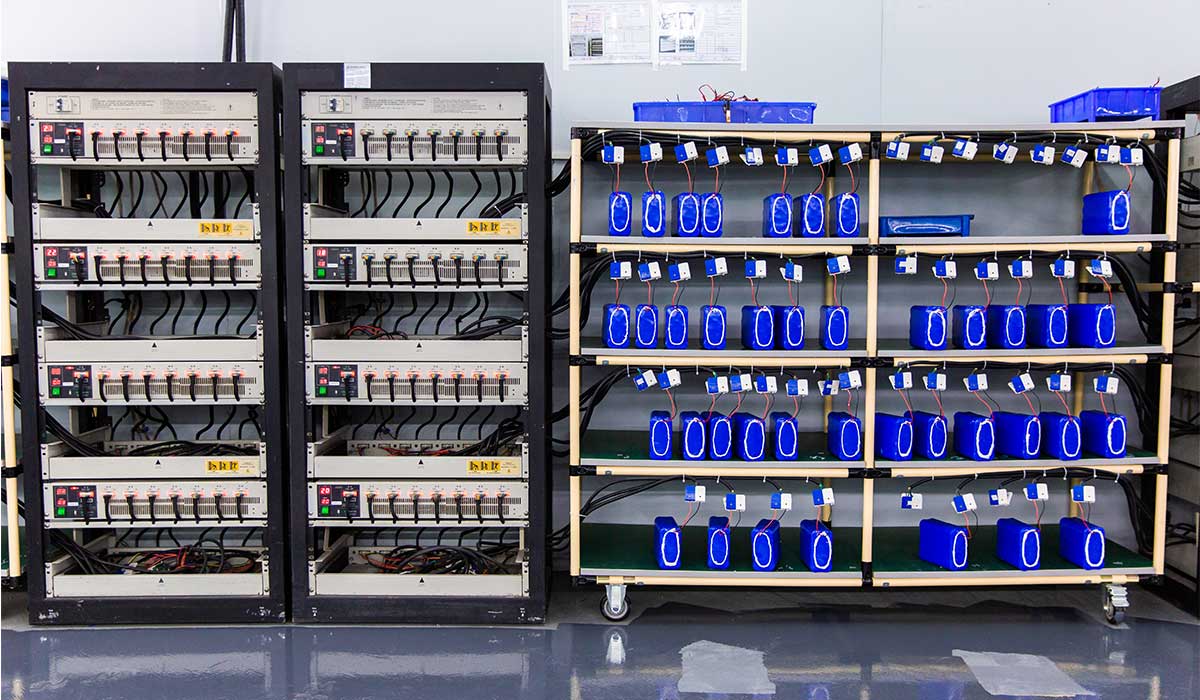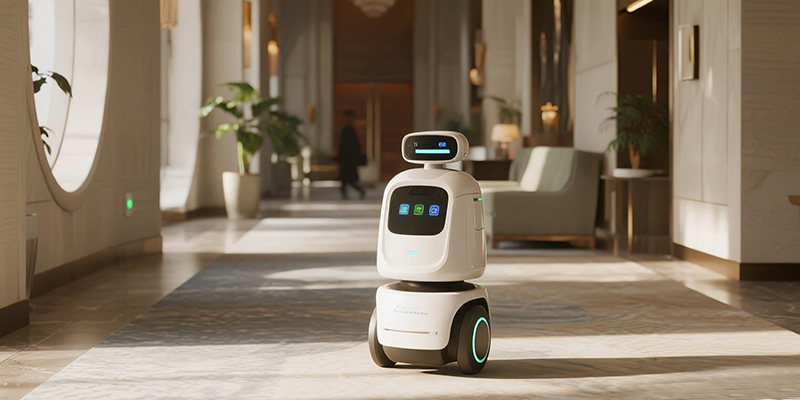At HIMAX Electronics, we specialize in providing high-performance battery solutions for a variety of applications, from robotics to electric vehicles and solar storage systems. A common question we encounter is whether LiFePO4 (Lithium Iron Phosphate) batteries are compatible with Lead Acid batteries. In this article, we’ll explain why these two types of batteries, despite being chemically different, can be compatible in certain applications—and how you can integrate them into your power systems for optimal performance.
Understanding LiFePO4 and Lead Acid Batteries
Before discussing their compatibility, it’s important to understand the basic characteristics of both LiFePO4 and Lead Acid batteries:
-
LiFePO4 Batteries:
LiFePO4 is a type of lithium-ion battery, known for its safety, long cycle life, and thermal stability.
These batteries typically have a nominal voltage of 3.2V per cell, and when configured in packs, can provide a variety of voltages (12.8V, 25.6V, 51.2V, etc.).
LiFePO4 batteries are commonly used in applications that require high energy density, such as electric vehicles, robotics, and solar energy storage systems.

-
Lead Acid Batteries:
Lead Acid batteries have been the go-to choice for many applications, especially in automotive and backup power systems.
They operate at a nominal voltage of 2V per cell and are typically arranged in 12V, 24V, or 48V systems.
These batteries are inexpensive, widely available, and reliable, but they have a shorter lifespan and lower energy density than lithium-based batteries.
Why LiFePO4 Batteries and Lead Acid Batteries Can Be Compatible
Although LiFePO4 and Lead Acid batteries are chemically and technologically different, there are several reasons why they can be compatible in certain applications. Here are the key factors:
-
Voltage Similarity in Series Configurations:
One of the reasons these batteries can work together is that when arranged in series (i.e., connecting multiple cells to form a battery pack), both LiFePO4 batteries and Lead Acid batteries can achieve similar nominal voltages.
For instance, a typical 12V Lead Acid battery pack (comprising 6 cells) can be matched with a 12.8V LiFePO4 pack (comprising 4 cells). This voltage overlap makes it possible to integrate them in parallel or in hybrid systems, as long as the charge/discharge characteristics are carefully managed.
-
Energy Storage and Hybrid Systems:
In off-grid energy storage systems or hybrid battery systems, you can integrate both LiFePO4 and Lead Acid batteries to take advantage of their respective strengths.
LiFePO4 batteries provide higher efficiency, longer cycle life, and faster charging times, making them ideal for high-power applications.
Lead Acid batteries are often used in systems where cost is a priority or where the system does not require the long cycle life and energy density of lithium-based batteries.
HIMAX Electronics offers systems where both types of batteries can be used together, each optimizing the performance of the other, such as in solar energy storage or backup power systems.
-
Chargers and Battery Management Systems (BMS):
With the proper Battery Management System (BMS) and chargers, LiFePO4 batteries and Lead Acid batteries can be charged and monitored independently, allowing them to function together in a single system.
HIMAX Electronics provides smart chargers and BMS solutions tailored for both LiFePO4 and Lead Acid batteries. These systems ensure that each type of battery is charged according to its specific requirements, maintaining system stability and battery health.
Shared Applications for Hybrid Power Solutions:
In hybrid systems, LiFePO4 and Lead Acid batteries are often used to optimize both cost-effectiveness and performance. For example, LiFePO4 batteries could be used to handle short-term, high power demands (such as starting motors or peak load scenarios), while Lead Acid batteries can handle long-duration storage and backup power at a lower cost.
In solar energy storage, HIMAX Electronics offers solutions where both types of batteries can complement each other, maximizing both efficiency and cost savings in off-grid or grid-tied applications.

Best Practices for Using LiFePO4 and Lead Acid Batteries Together
While LiFePO4 and Lead Acid batteries can work together in certain systems, there are some best practices to follow to ensure compatibility and prevent issues:
-
Use Separate Charge Controllers:
It’s crucial to use different charge controllers and BMS for each battery type. LiFePO4 and Lead Acid batteries have distinct charging profiles, and using a combined charge controller designed for both battery types is essential to avoid damage or inefficient charging.
-
Voltage Matching:
Ensure that the voltages of your LiFePO4 and Lead Acid battery packs are similar, especially when they are connected in parallel. Using batteries with different voltages in parallel could lead to charging imbalances and potential damage.
-
Monitor Battery Health:
Always monitor the health and performance of both types of batteries in a hybrid system. LiFePO4 batteries will typically have a longer lifespan than Lead Acid batteries, so it’s important to monitor both to ensure that the system continues to function optimally.
-
Consult with Experts:
If you’re planning to integrate LiFePO4 and Lead Acid batteries into a hybrid system, it’s best to consult with battery experts. At HIMAX Electronics, we offer consulting and design services to help you develop the best energy storage system for your needs.
Conclusion: Compatibility for Hybrid Battery Systems
In conclusion, LiFePO4 batteries and Lead Acid batteries can be compatible in certain applications, particularly in hybrid systems that leverage the strengths of each type. By using the appropriate chargers, BMS, and monitoring systems, both types of batteries can work together effectively, providing a balance of cost, performance, and longevity.
At HIMAX Electronics, we specialize in providing high-quality LiFePO4 batteries, Lead Acid batteries, and hybrid energy storage solutions that can be tailored to meet your unique power needs. Whether you’re working on a solar energy system, electric vehicle, or robotics, we can help you design a solution that integrates both battery technologies for optimal performance.
Visit HIMAX Electronics today to explore our full range of products and services!




























